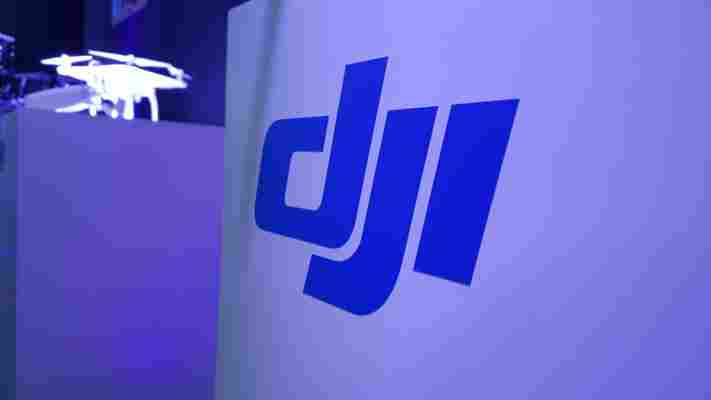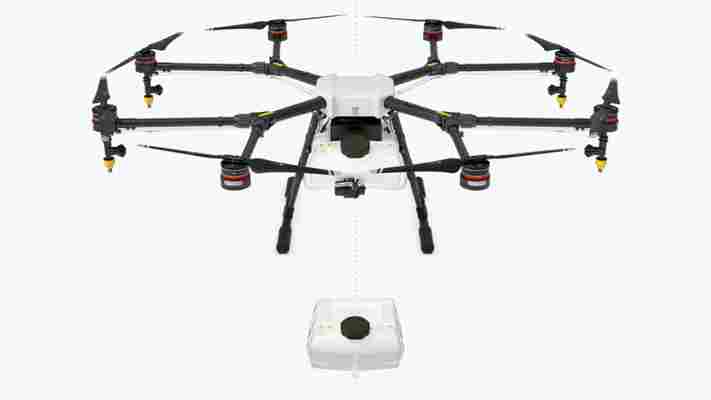Drone maker DJI has today announced a new model aimed squarely at the consumer market.

While it’s known for professional and ‘prosumer’ devices, the new model brings higher-definition video capture to tempt the average home user too. Now, it maxes out at 4K resolution.
The company said the device isn’t just a new model in its Phantom line, rather, it’s been completely redesigned from the ground-up.
The aim, a spokesperson said, is to ensure that aerial imaging is as “intuitive” as smartphone photography. To achieve this, it has overhauled the accompanying footage app and hardware. It offers three-axis stabilizing technology to help make videos and images smoother, and YouTube Live integration to allow you to stream your flight straight out of the box.
If you want to get your hands on the Professional edition drone, which maxes out at 4K video capture, it’ll cost $1,250 (£1,159). The slightly lower-res Phantom 3 Advanced costs a little less, at $1000 (£899). Flight time is around 23 minutes, the company said.
The controller for the Phantom 3 comes with DJI Lightbridge technology, which the company says will provide (up to 720p) HD video in near real-time up to 1 mile away with “almost no latency” to help you keep control of the device.
In order to make the Phantom 3 a little easier to fly, there’s better GPS support (which also helps with device stabilization) and a few other tweaks designed to make it easier to land and take off – most notably, the addition of downward facing sensors and camera to help the device position itself relative to the ground. It also has upgraded motors to help it accelerate and decelerate faster, which also helps with take-off and landing.
The new pilot app also has new functionality, like a director ability that marks certain points of your flight on the timeline to allow you to edit footage more quickly once you’re putting a finished video together. This will let you cut them together for a final edit, to add music, etc. Once you’re happy with your videos, you can upload them directly to Instagram, YouTube, Facebook and Youku.
Perhaps more handily, particularly for new pilots, there’s also a simulator mode so you can train yourself virtually before taking the Phantom 3 out into the real world.
DJI gets serious about drones with its new $15,000 MG-1 for agriculturists
Most drones sold today are designed for recreational use: flying it around your backyard or shooting videos of your outdoor adventures. But it’s not all fun and games. DJI has entered agricultural airspace with its new Agras MG-1 , a $15,000 crop sprayer.

The Chinese manufacturer’s latest offering is designed to spray pesticides on crops from its 2.6-gallon tank. The eight-rotor drone can fly for about 12 minutes on a single charge. DJI says it can spray between seven and 10 acres of farmland per hour, depending on the terrain it has to cover. Of course, that doesn’t count the time it takes to charge its batteries.
In addition, the MG-1 is dust-resistant and contains a cooling system to keep its internals in good shape and extend the drone’s life. Best of all, it can be set to cover a pre-defined area automatically.
Pre-orders for the MG-1 start today in China, and soon in South Korea and other markets.


It’ll be interesting to see if the MG-1 takes off across the world. Valued at $8 billion , DJI is the largest maker of consumer drones in the world, and the success of its first aerial crop sprayer will determine whether the agricultural drone market is indeed ripe for harvesting.
In 2013, the Association of Unmanned Vehicle Systems International , a drone trade group, forecast that that agriculture would account for 92 percent of an estimated $82 billion economic impact from commercial drones in the US over the next decade ( PDF ).
Among the challenges ahead are the limited carrying capacity and flight time of such drones, as they wouldn’t be suitable for larger farms like those in the US. According to the Wall Street Journal , they risk losing out to small planes that are currently used to spray hundreds of gallons of pesticide and are relatively inexpensive to hire.
There are also flying regulations to consider, as the number of drones, and thus, air traffic, increases across the globe. The US Federal Aviation Administration (FAA) estimates that Americans will have bought 700,000 drones by this Christmas and is considering having each owner register their unmanned vehicles .
In addition to planes and helicopters, there are also Amazon and Google’s delivery drones to worry about. The agency is working with drone maker PrecisionHawk to test an on-board system that will allow drones to report their own locations in the air using cell towers, instead of having a central control tower attempt to track each one.
With agricultural drones poised to take to the skies, the FAA will have its hands full governing the flights of so many vehicles at once. It’ll be interesting to how it implements learnings from its Pathfinder program to understand the future of drone operation, and what that spells for unmanned flight.
➤ MG-1 [DJI]
Sony is reportedly building a ‘PlayStation 4.5’ for VR and 4K games
Turns out that the Playstation VR may not be all the new hardware Sony is working on. According to a report by Kotaku , the company is building a ‘PS 4.5’ with upgraded specs to handle the imminent onslaught of 4K and virtual reality games.

The company has reportedly reached out to developers to outline the console, including a more powerful GPU to push the 4K resolution and 3D VR content. However, there’s no word on how games would be differentiated between the traditional PS4 and the newer console.
While it’s just a rumor at this point, Kotaku says it’s spoken to at least four developers familiar with the device, and mentioned having casually overheard it being mentioned during the Game Developers Conference earlier this week.
Moreover, the timing would make sense. This console generation has seen an unusual mid-life spark thank to the advent of VR, and a partly upgraded console could help give the PS4 legs for years to come, as well as compete against the likes of the Oculus Rift and HTC Vive, both of which require more powerful desktop graphics.
Meanwhile, Nintendo is set to announce its next console sometime this year; Sony might not want to be left behind.
For its part, the company provided the expected response: “We can’t comment on rumors or speculation,” a spokesperson said.
➤ Sources: Sony Is Working On A ‘PlayStation 4.5’ [Kotaku]
